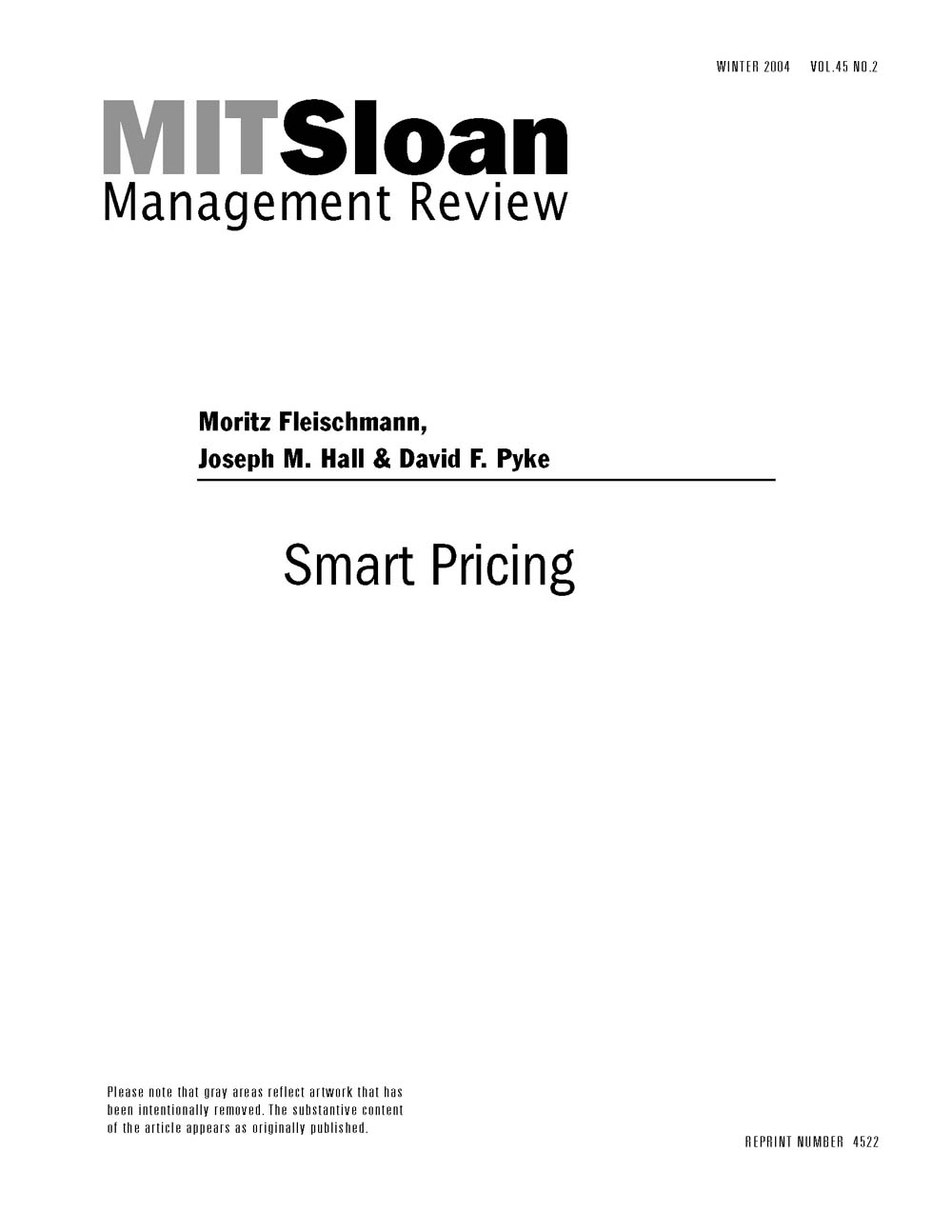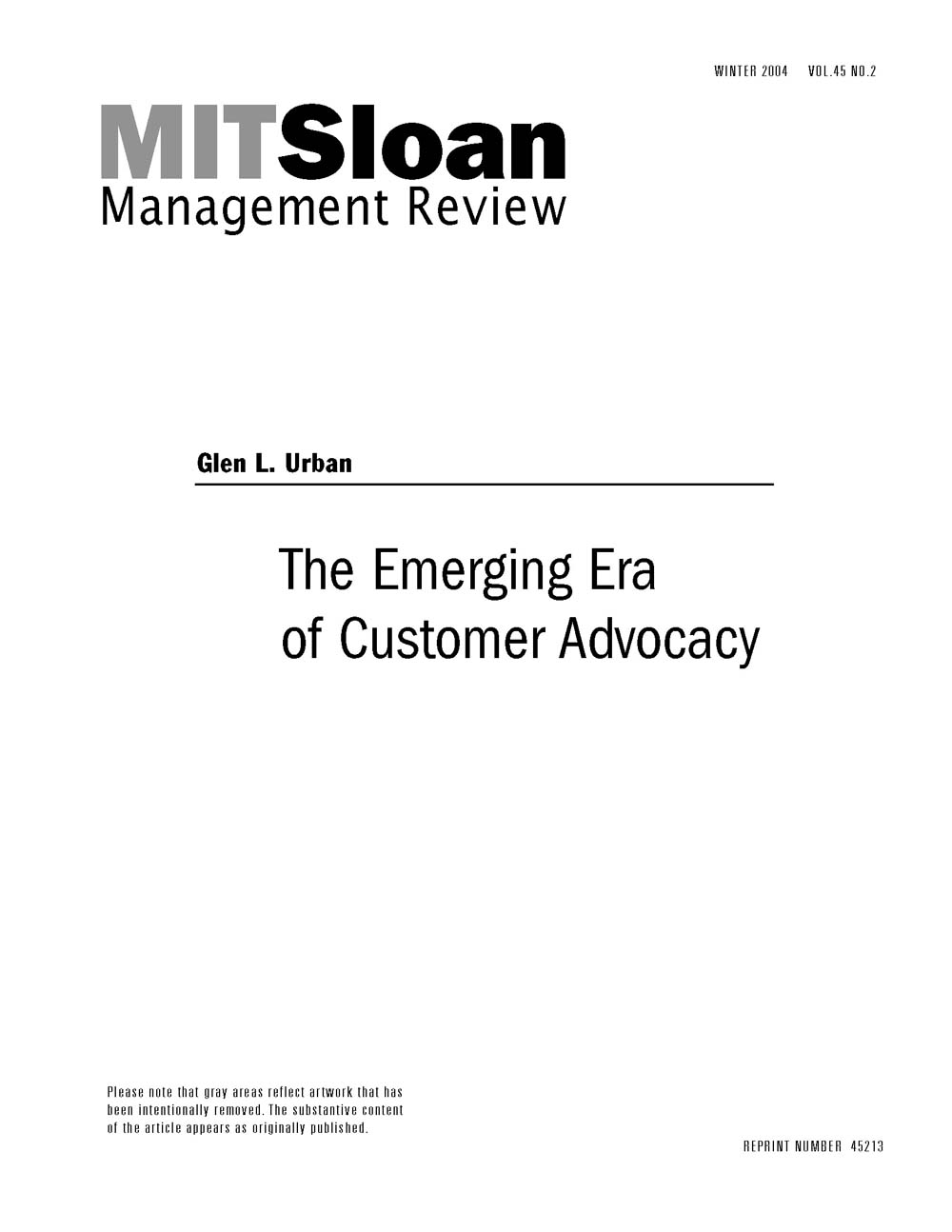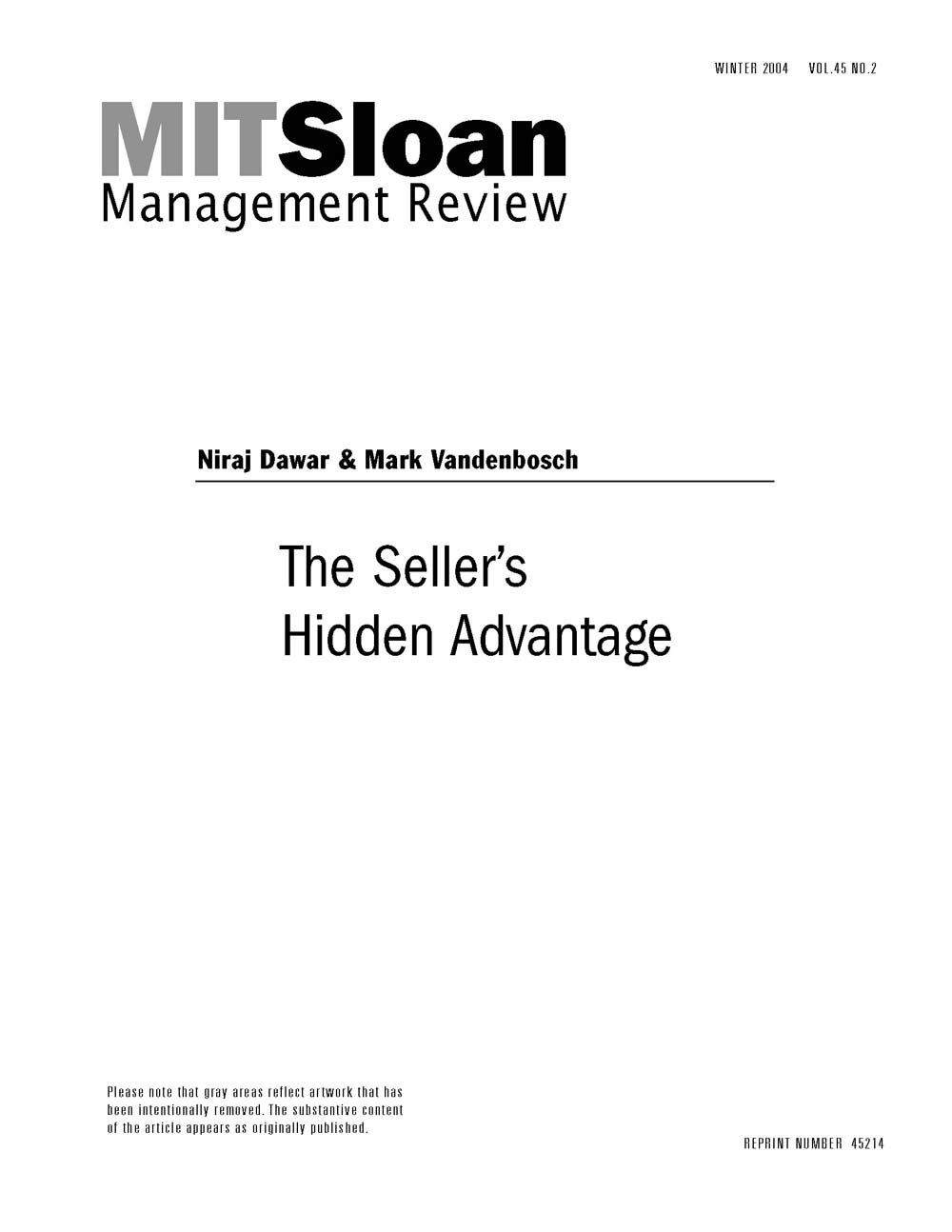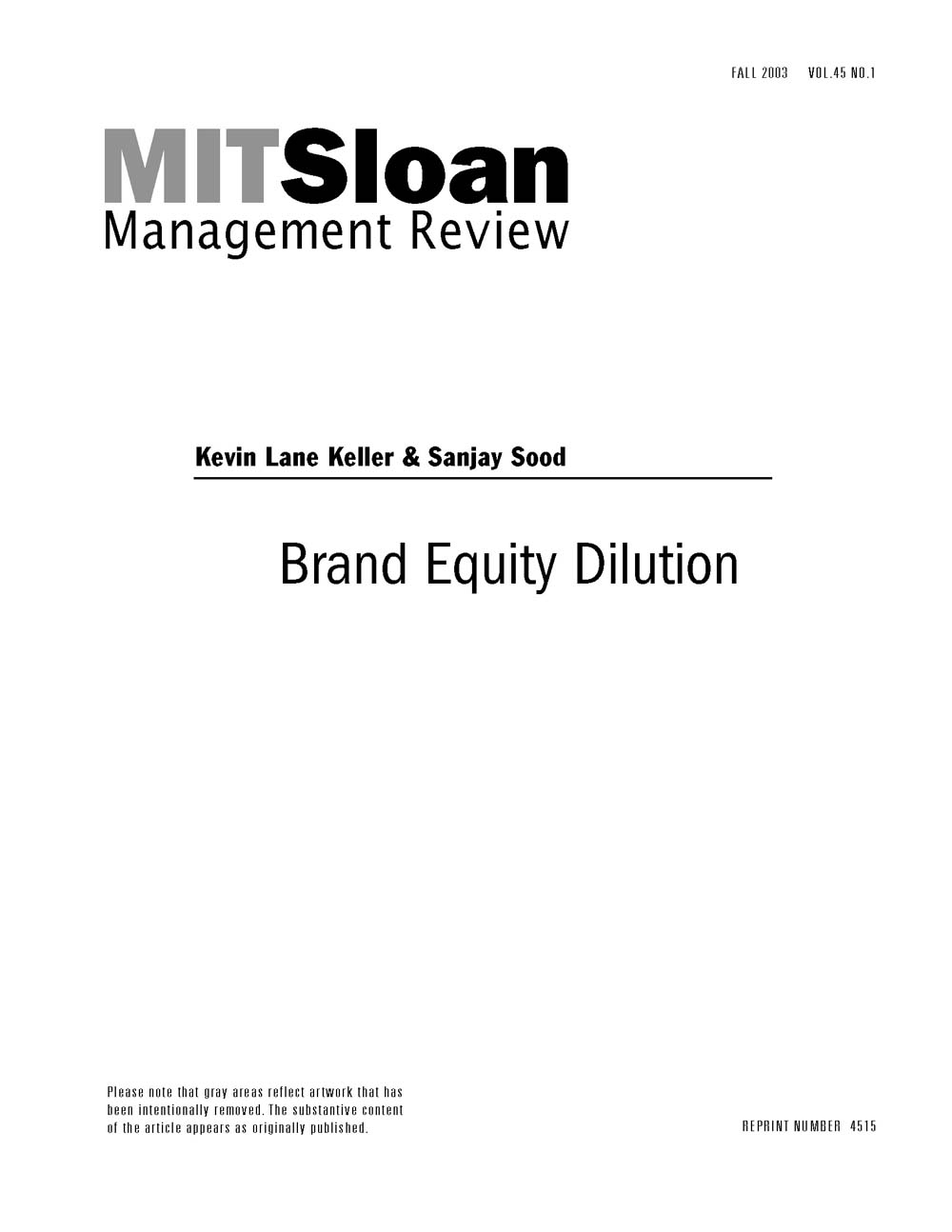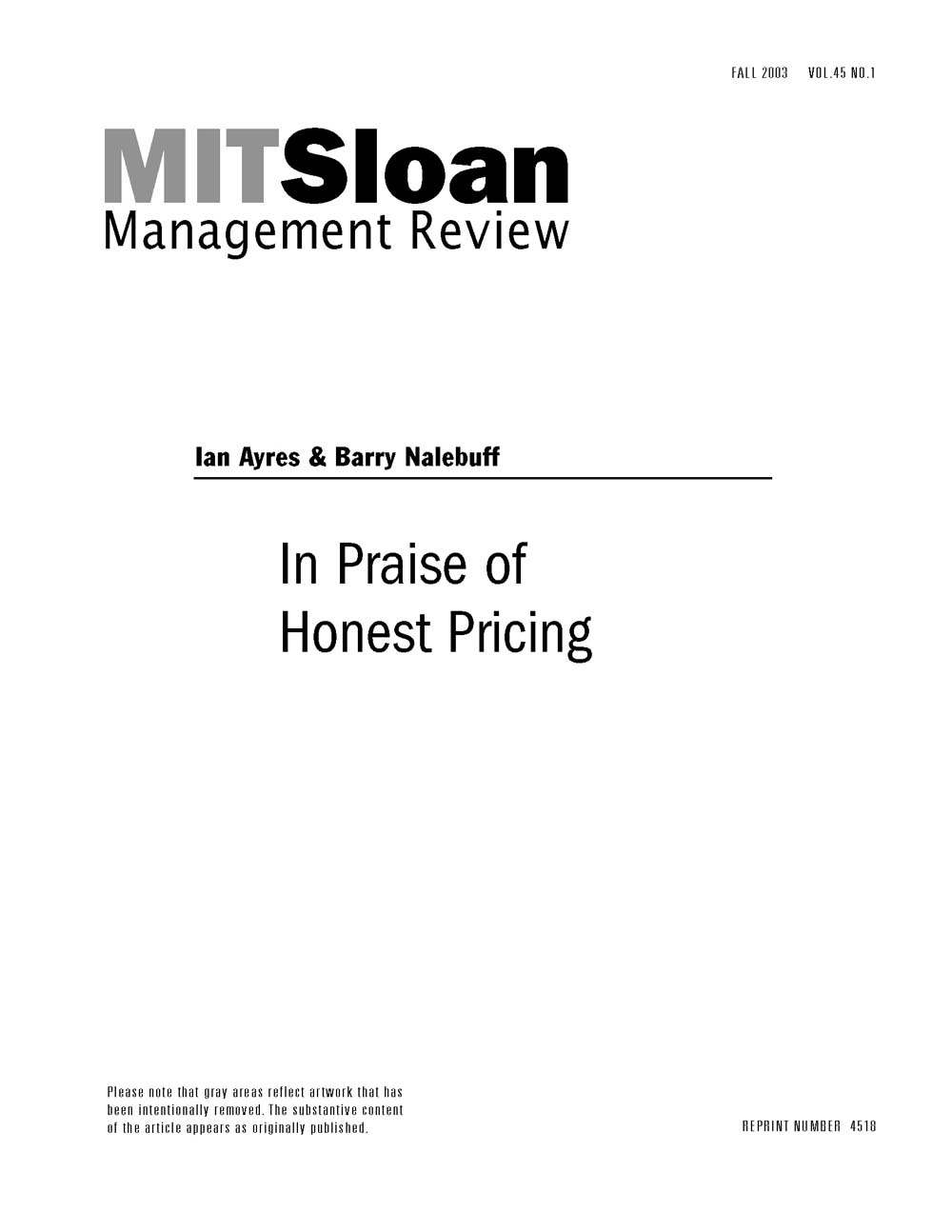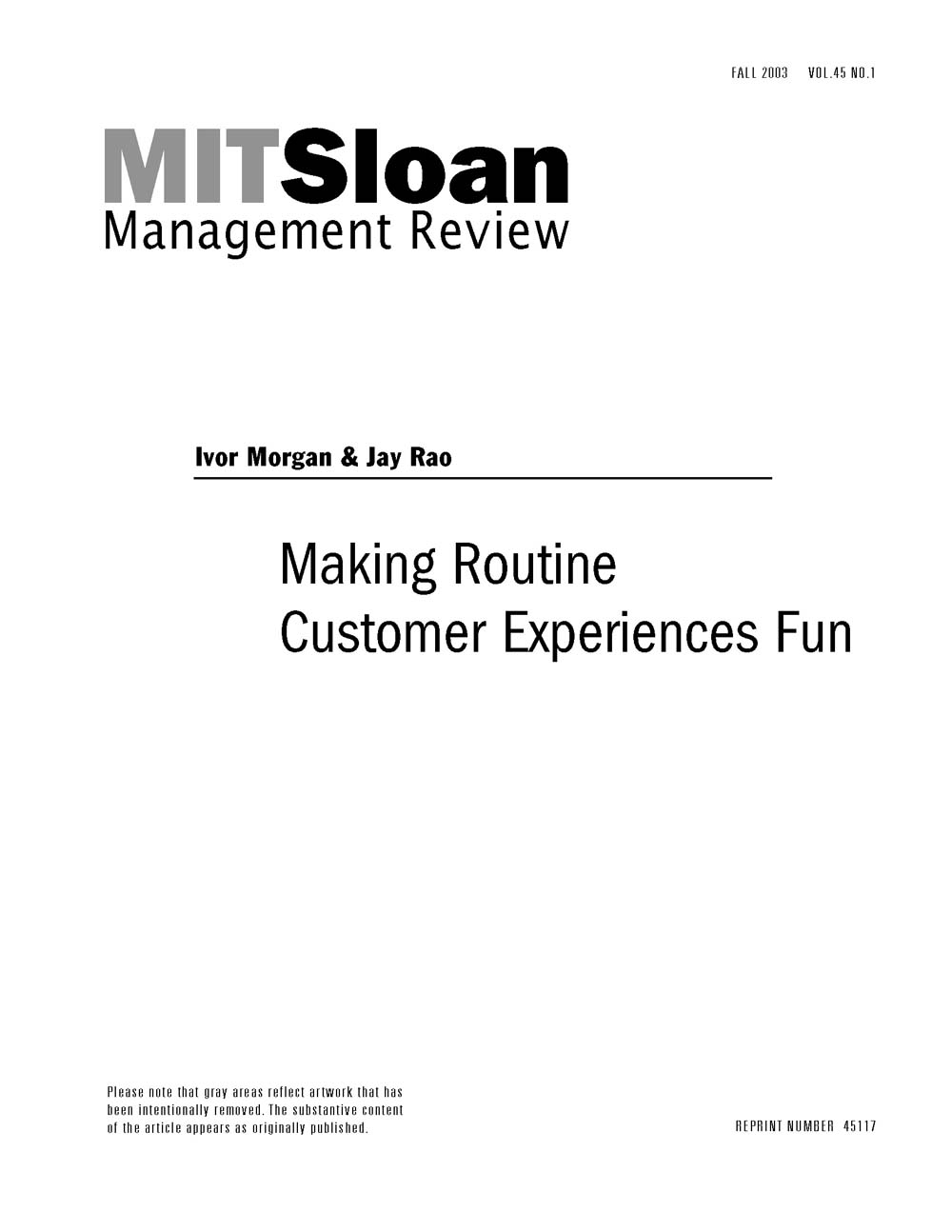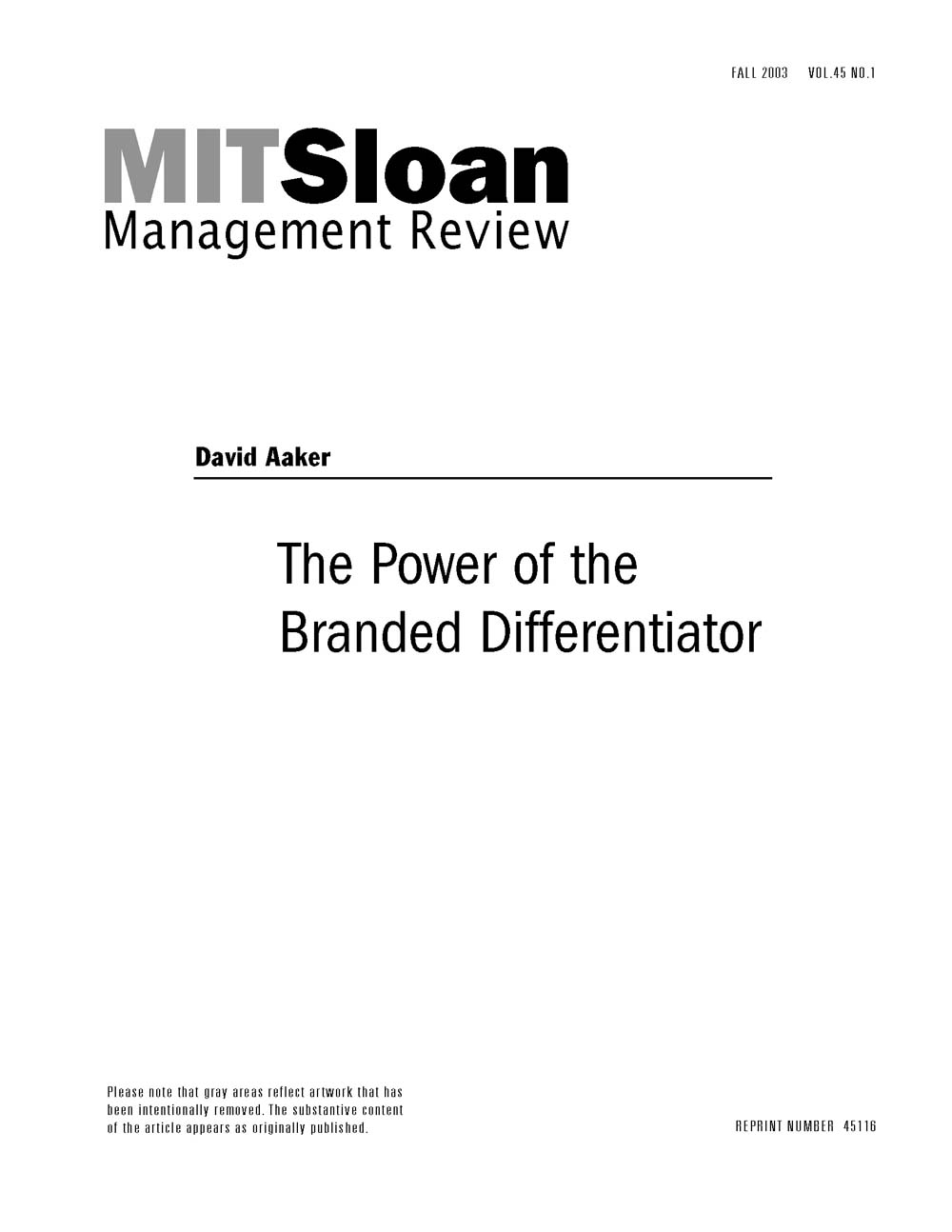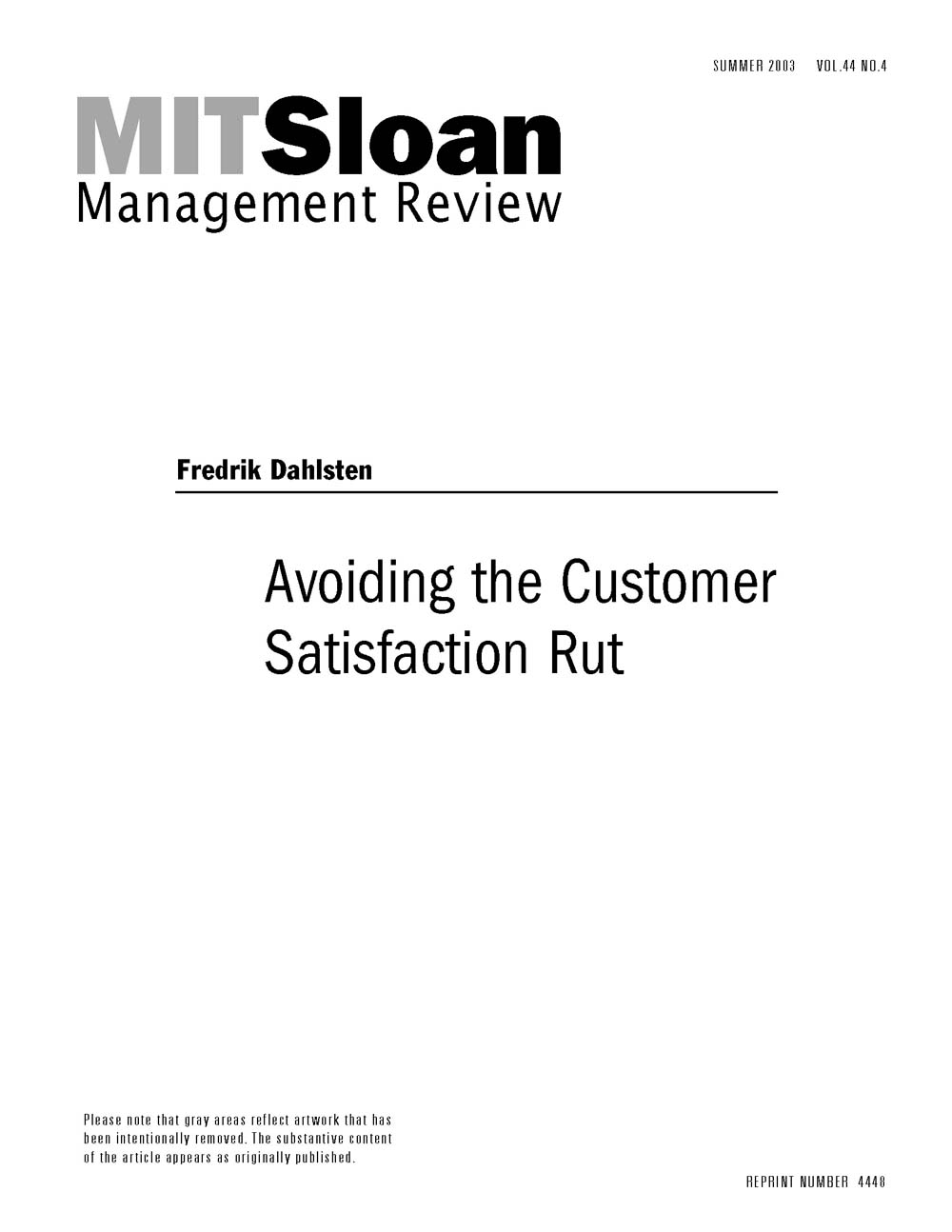Deep discounting strategies provide decidedly mixed long-term benefits.
Marketing
Page 19 of 23
-
Smart Pricing
A review of recent and seminal work linking pricing decisions with operational insights.
-
The Emerging Era of Customer Advocacy
For decades, companies relied on push marketing to sell their products and services. Then, in the 1990s, the emphasis shifted to relationship marketing, as slogans such as "delight your customers" became the mantra of many marketers. But those tactics have been losing their effectiveness, particularly as the power of customers continues to grow. Thanks to digital technologies like the Internet, today's increasingly educated consumers expect companies to do more than just delight them. In response, innovative companies are now trying a different approach: They are providing customers with open, honest and complete information, and then finding the best products for them -- even if those offerings are from competitors. In short, they are truly representing their customers' best interests, essentially becoming advocates for them. The strategy is this: If a company advocates for its customers, they will reciprocate with their trust, loyalty and purchases -- either now or in the future. The firm might then command higher prices for its products and services, as many customers will be willing to pay for the extra value. And when people trust a company, they will often tell others about it, helping to reduce the organization's costs for acquiring new customers.
-
The Seller's Hidden Advantage
Sellers know things about their customers' businesses that the customers don't know and can't find out on their own yet value immensely. Because they come into contact with many and varied buyers, sellers have a bird's-eye view of the forest -- the industry's competitive landscape -- in contrast to customers, who often see only the trees. And they can use their wide range of experience to teach customers about their own businesses. This isn't a matter of divulging confidential aspects of clients' businesses to their competitors. The challenge is to translate an industrywide perspective into knowledge that customers can use. Companies that can do that successfully reduce their customers' costs or operating risks and are rewarded in turn with customer loyalty, pricing flexibility or both. The authors lay out three strategies that companies can adopt to turn a view of the forest into value for customers and competitive advantage for the business. They also explain the steps companies should take to collect, aggregate, adapt and share customer experiences.
-
Brand Equity Dilution
Brands may be less vulnerable to the vagaries of extension than is commonly feared.
-
In Praise of Honest Pricing
A great variety of companies -- cell phone operators, rental car companies, video rental chains and many others -- price their products and services in ways that confuse and irritate their customers, according to the authors. They lure people in with teaser rates, two-for-one-deals, "free" gifts and so on, and then slap them with late fees, charges for "extra" usage and other unanticipated costs. The conventional wisdom is that such tactics are a good idea; after all, they allow companies to boost profits while seeming to price competitively. But, say the authors, hidden pricing can be harmful not only for consumers who can't figure out what something really costs, but also for the businesses that engage in it. That's because it isn't enough to fool customers. Companies also have to fool their competitors with pricing games, and that is much harder to do. Rivals are equally good at fooling customers and will spend heavily to attract them. If competition forces a business to spend an extra $1 today in order to attract a customer worth an extra $1 tomorrow, neither the business nor the customer ends up any better off. Using examples from the appliance industry and restaurant business, the authors show how companies that engage in honest pricing can enjoy important benefits -- happier customers, clearer product differentiation and, consequently, higher profits.
-
Making Routine Customer Experiences Fun
Most consumption experiences that people have are the routine stuff of life -- filling the gas tank, buying groceries, grabbing a quick lunch. Such tasks for the most part are neither fun nor painful; they're simply things that need to get checked off the list. Indeed, the authors say, they are so neutral that people often choose the seller with little thought and forget the experience in a matter of hours. Some providers of neutral services want to keep things that way. They want to be so convenient and reliable that people continue to use them unthinkingly. For certain mature service businesses, however, the addition of fun can be an important differentiator. The authors present three case studies taken from industries not known for fun -- furniture retailing, consumer banking and the grocery business -- to show how it can be turned to profitable advantage. Jordan's Furniture, Commerce Bank and Stew Leonard's operate their basic business models at a very high standard of excellence. But they also have what it takes to make a routine experience into something positive: strong leadership, a clear vision, a discriminating filter for new employees, a focus on hiring for attitudes rather than skills, and the ability to come up with the unexpected. The authors offer some general guidelines and cautionary notes to help managers who may want to try to emulate these successful companies.
-
The Power of the Branded Differentiator
If a brand fails to develop or maintain differentiation, consumers have no basis for choosing it over others. The product's price will then be the determining factor in a decision to purchase. Absent differentiation, says the author, the core of any brand and its associated business -- a loyal customer base -- cannot be created or sustained. In a time when the competitive terrain for most brands is difficult to brutal, the author describes a new tool that can help companies maintain an advantage: the branded differentiator. A branded differentiator can be a feature, service, program or ingredient. To be worthy of the term "differentiator" -- to be more than just a name slapped on a feature -- it must be meaningful to customers; that is, it must be both pertinent and substantial enough to matter when people are purchasing or using the product or service. It must also be actively managed (and thus be able to justify the investment of management time) over an extended period -- years or even decades -- so that it does not become stagnant. This article explores the different types of branded differentiators, the pros and cons of developing them internally versus looking outside for them, and questions about managing these brands-within-brands.
-
Avoiding the Customer Satisfaction Rut
Having received a great deal of attention for decades now, customer satisfaction (CS) practices have become one of the core prescriptions for managers and organizations. Indeed, for many companies, customer satisfaction has become the guiding principle, as they increasingly initiate all manner of strategies and processes under its banner. But more and more, says Fredrik Dahlsten, these practices are losing their effectiveness for companies and their customers alike. Using qualitative research at Volvo Cars, the author illustrates how the interpretation of customer satisfaction can become skewed, employing rigorous and extensive CS measurements, but measuring the wrong variables and using the information in mainly reactive ways. Many companies have only an intrinsic CS focus -- a product orientation based on attribute quality and a short-term internal perspective triggered by surveys and aimed at cost control. With an intrinsic focus, customer satisfaction is seen mostly as the absence of dissatisfaction. In contrast, an extrinsic CS focus emphasizes finding new ways to increase the positive, emotional aspects of the customer experience over time. The author argues that managers who wish to climb out of their customer satisfaction rut must move beyond the mere measurement of quality, refocus their practices on the customer's actual experience and formulate a comprehensive strategy for using that knowledge throughout the organization. He illustrates those concepts by showing how practices at Volvo are being improved to incorporate a greater extrinsic focus and make better use of the resulting customer knowledge.




